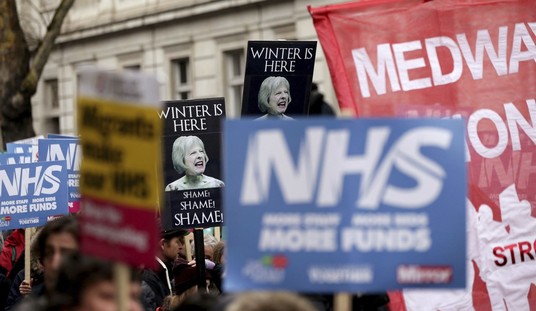For some time now, Maryland Governor Larry Hogan (R) has been threatening to step in and do something about Baltimore’s skyrocketing murder rate if the city couldn’t get it under control. That’s led to some awkward moments in the otherwise mostly cooperative relationship he’s had with the city’s new Democratic mayor, Catherine Pugh. One of those popped up last week when he told reporters that he wasn’t even sure if the mayor had a plan to do anything about it.
This week the Governor revealed his own plan and it contains new resources for Baltimore law enforcement as well as a far tougher approach to repeat gun violence offenders. While help was desperately needed, that didn’t stop some of the city’s Democrats from complaining anyway. (Baltimore Sun)
Hogan’s plan includes beefed-up patrols in the city by state police agencies, including the state police and transportation agencies, as well as increased monitoring of people on parole and probation, more outside assistance for serving warrants, the creation of a cross-jurisdictional crime-fighting council and legislation that calls for longer sentences for violent criminals.
It comes as the city is on pace to end 2017 with more than 1,000 shootings.
“Let me be crystal clear: I have absolutely no tolerance whatsoever for these repeat violent offenders and these criminal gangs causing lawlessness in our streets,” Hogan said.
The governor said there were more than 300 drug-trafficking organizations in Maryland last year; 10,000 people associated with gangs; and more than 5,000 guns involved in crimes.
It’s an ambitious package when you begin digging into the details. Hogan is setting up a new commission focusing strictly on gang violence, as well as an expanded intelligence-sharing network allowing municipal, state and federal agencies to track criminal activity. New parole and probation officers are being dispatched to Baltimore to track down parole violators. Hogan will coordinate with the U.S. Marshals Service to conduct what’s being described as “an aggressive sweep” of the city to arrest those with high priority, outstanding warrants.
In addition to all that, he’s proposing new state legislation to crack down on repeat offenders and those with illegal weapons charges. (Baltimore tried that earlier this year, but the City Council watered down the bill so badly that it was little more than window dressing when they were finished.) Also, repeat offenders would have to serve their full sentence rather getting out early on parole.
One of the more controversial measures is the plan to dispatch expanded patrols in the city by state troopers, as well as teaming the State Police up with city cops when serving high-priority warrants in dangerous gang territory. You’d expect such help to be gratefully accepted, but big city police forces (and City Halls) have a history of fighting such “interference” from the state level. In New York City, when Governor Cuomo announced plans to expand state trooper patrols and expand the State Police barracks in the Big Apple, the city’s police unions and Mayor de Blasio pushed back on the plan, causing yet another awkward rift between the two Democratic leaders.
Of course, New York City can afford to take on that sort of fight with the state government because they’ve got their violent crime situation under control in a way that Baltimore can only dream of right now. (Despite having literally ten times the population of Charm City, the Big Apple actually has fewer murders this year.) Hopefully, Baltimore won’t figure out a way to derail this plan over petty politics. Much of both East and West Baltimore currently resemble war zones more than any typical American urban setting. Something needs to be done and Hogan’s plan looks like it could be a good start.








Join the conversation as a VIP Member